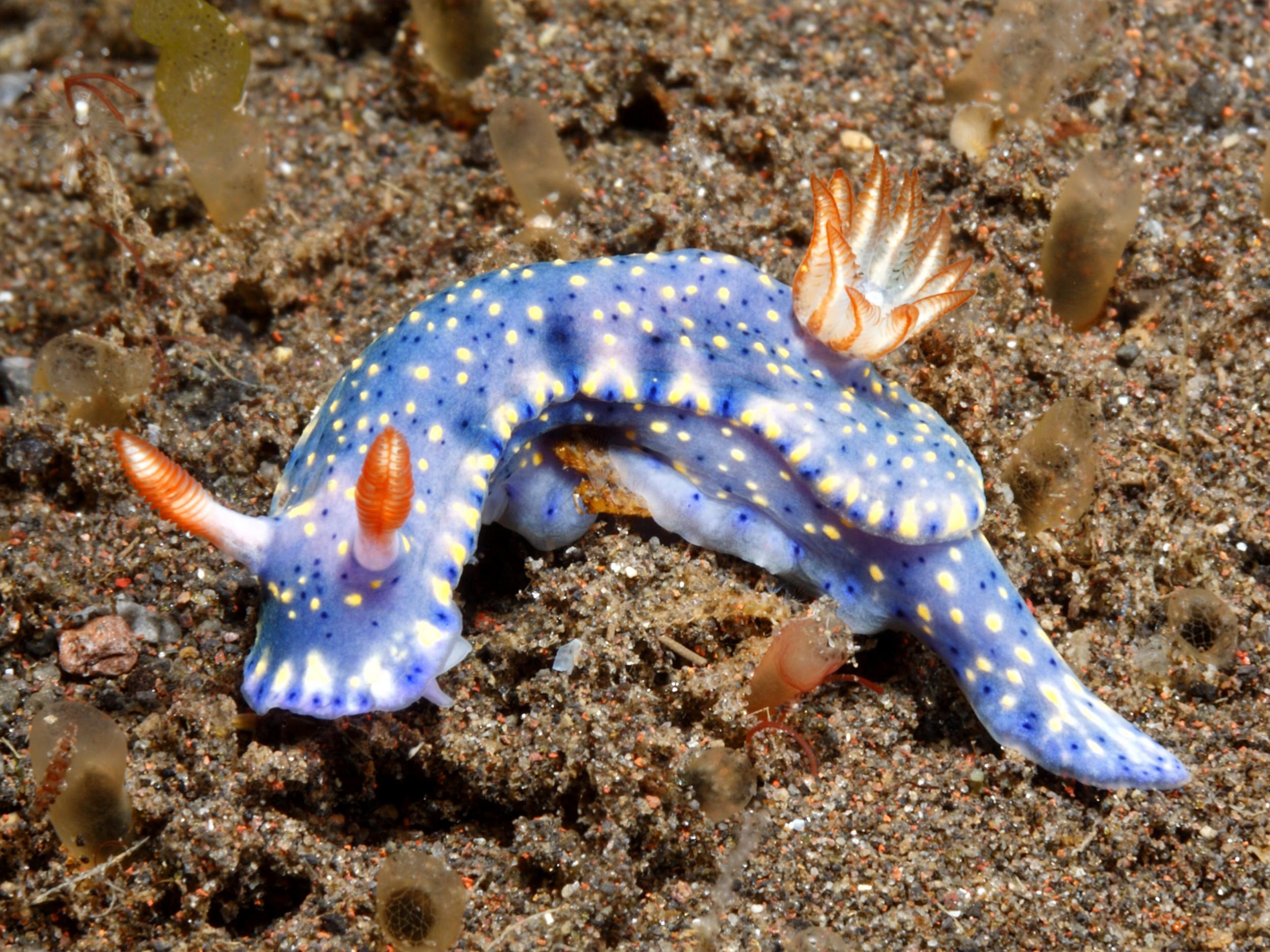Survival of the laziest: Slow lifestyle is key to not dying out, study says
Research looking at ocean creatures like sea slugs and shellfish shows those with minimal energy requirements are more likely to prosper

Your support helps us to tell the story
From reproductive rights to climate change to Big Tech, The Independent is on the ground when the story is developing. Whether it's investigating the financials of Elon Musk's pro-Trump PAC or producing our latest documentary, 'The A Word', which shines a light on the American women fighting for reproductive rights, we know how important it is to parse out the facts from the messaging.
At such a critical moment in US history, we need reporters on the ground. Your donation allows us to keep sending journalists to speak to both sides of the story.
The Independent is trusted by Americans across the entire political spectrum. And unlike many other quality news outlets, we choose not to lock Americans out of our reporting and analysis with paywalls. We believe quality journalism should be available to everyone, paid for by those who can afford it.
Your support makes all the difference.Laziness is an effective evolutionary strategy that ensures the survival of the species, according to a theory laid out in a new paper.
This “survival of the slacker” idea has emerged from a study of creatures living on the Atlantic sea floor and how they have fared over the past five million years.
The work suggested that a slow pace of life can be a good strategy that helps individuals, species and even whole groups of species last longer.
Although the research was based on lowly molluscs such as sea slugs, sea snails and shellfish, the authors suggested this could be a general principle that applies to higher animals as well.
The scientists carried out an extensive study of the energy needs of 299 species of extinct and living bivalves and gastropods over millions of years.
Those that had managed to escape extinction and survived to the present day tended to be “low maintenance” species with minimal energy requirements.
Molluscs that had gone the way of the dinosaurs and disappeared had higher metabolic rates than their still flourishing cousins.
US ecologist Professor Bruce Lieberman, who co-led the University of Kansas team, said: “Maybe in the long term the best evolutionary strategy for animals is to be lassitudinous and sluggish.
“The lower the metabolic rate, the more likely the species you belong to will survive. Instead of ‘survival of the fittest’, maybe a better metaphor for the history of life is ‘survival of the laziest’ or at least ‘survival of the sluggish’.”
The findings, reported in the journal Proceedings of the Royal Society B, could have important implications for forecasting the fate of species affected by climate change, said the scientists.
Dr Luke Strotz, also from the University of Kansas, said: “In a sense, we’re looking at a potential predictor of extinction probability.
“At the species level, metabolic rate isn’t the be all, end all of extinction – there are a lot of factors at play. But these results say that the metabolic rate of an organism is a component of extinction likelihood.
“With a higher metabolic rate, a species is more likely to go extinct. So, it’s another tool in the toolbox. This will increase our understanding of the mechanisms that drive extinction and help us to better determine the likelihood of a species going extinct.”
Energy consumption had a bigger impact on species that were narrowly distributed, the researchers found.
Species with a narrowly confined range were far more likely to go extinct if they had a high metabolic rate.
Molluscs were used for the study because of the huge amount of available data on living and extinct bivalve and gastropod species.
The team now plans followup work to see if “survival of the laziest” natural selection applies to other kinds of animals.
Dr Strotz added: “There is a question as to whether this is just a mollusc phenomenon.
“There’s some justification, given the size of this data set, and the long amount of time it covers, that it’s generalisable. But you need to look – can it apply to vertebrates? Can it apply on land?”
The oldest animal ever known was a 507-year-old clam from the Icelandic seabed called Ming.
The incredibly low metabolic rates of Ming and its fellow ocean quahog clams is thought to be responsible for their long lifespans.
Unfortunately, Ming’s long life was brought to an abrupt end in 2006 when scientists assessing its age killed it by opening its shell.
Additional reporting by PA
Join our commenting forum
Join thought-provoking conversations, follow other Independent readers and see their replies
Comments